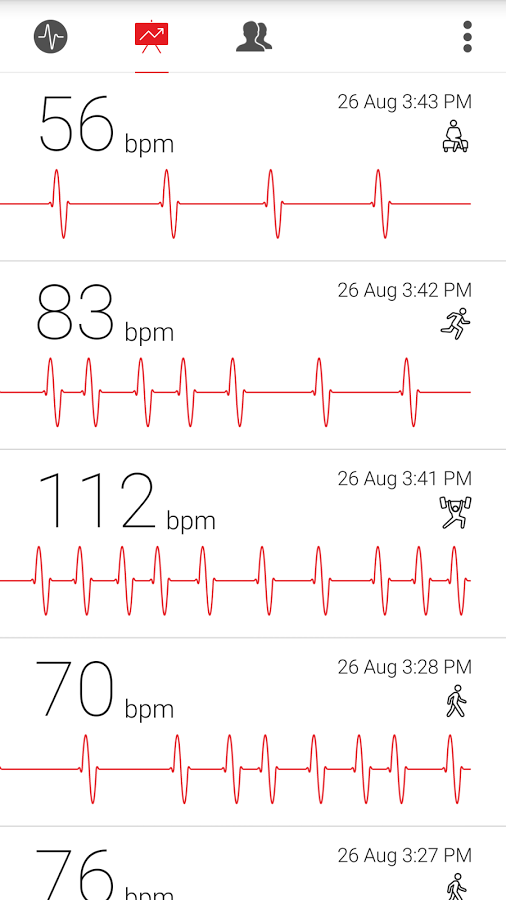

If the entire ECG is 10 seconds, then there must be 50 large boxes (10/0.20=50 boxes). There are five small boxes in each large box, thus each small box is 0.04 seconds. Time is represented on x-scale in seconds and current in millivolts(mV) on y-axis.Įach large box is 0.20 seconds. Ī dedicated ECG machine would usually print onto graph paper which has a background pattern of 1mm squares (often in red or green), with bold divisions every 5 mm in both vertical and horizontal directions.Įach ECG is divided by large boxes and small boxes to help measure times and distances. While those market-based issues remain to be worked out, McManus believes the application fills an unmet need.The output of an ECG recorder is a graph.
Future issues remain, however, regarding how the application will fit into traditional testing, the approval process, who pays for it, and how it will get billed. The application allows users to send the results directly to their physician via email and also provides summaries of atrial-fibrillation burden over selected time periods, a useful feature for physicians to determine whether another antiarrhythmic agent might be needed. "They want something quick, they wanted something that's accurate, and they want something that allows them to communicate effectively with their doctor, all the more reason for it to be a phone-based program." "Patients want this at their fingertips," he said. They don't want to travel to the hospital or the doctor's office every time they suspect they might be having an episode, however. To heart wire, McManus said that patients are clamoring for such an application, particularly those with diagnosed and treated atrial fibrillation who want to be on top of how many episodes of the arrhythmia they are having.
#Cardiograph app shows irregular heartbeat how to
"This is really the first step, showing that when it is used in the hospital setting, where a coach was showing them how to put their finger on the phone, people could successfully use this phone to know if they were in or out of atrial fibrillation," said McManus. The algorithms had excellent sensitivity (0.962), specificity (0.975), and accuracy (0.968) for the discrimination of an irregular pulse during atrial fibrillation from sinus rhythm. Following cardioversion, patients successfully converted to normal sinus rhythm again reapplied their finger to the smartphone as another recording was obtained. All subjects who had a preprocedure ECG placed their finger on an iPhone 4S camera for two minutes while the program ran. In the study, 76 adults with persistent atrial fibrillation scheduled to undergo elective cardioversion were included in the analysis. "So it's a quick biopsy of person's pulse that appears to be highly accurate compared with a 12-lead ECG, which is what we used in this study." "For the purposes of this study, we had patients keep their fingertip on the camera for two minutes, but we have that down now where we've shown that even one minute is sufficient," said McManus. Two algorithms-the root mean square of successive RR differences and Shannon entropy-analyze the degree of "chaos," or the variability of the pulse waveform. The changes in color act as a surrogate for blood flow, and this is in turn processed by a computer program embedded within the smartphone.

Not unlike a pulse oximeter, which uses infrared light, the flash lens works to illuminate the finger as the camera records in real time the changes in the color of the fingertip. The application works using the smartphone camera and the flash to illuminate the fingertip when it is placed on top of the camera surface.


 0 kommentar(er)
0 kommentar(er)
